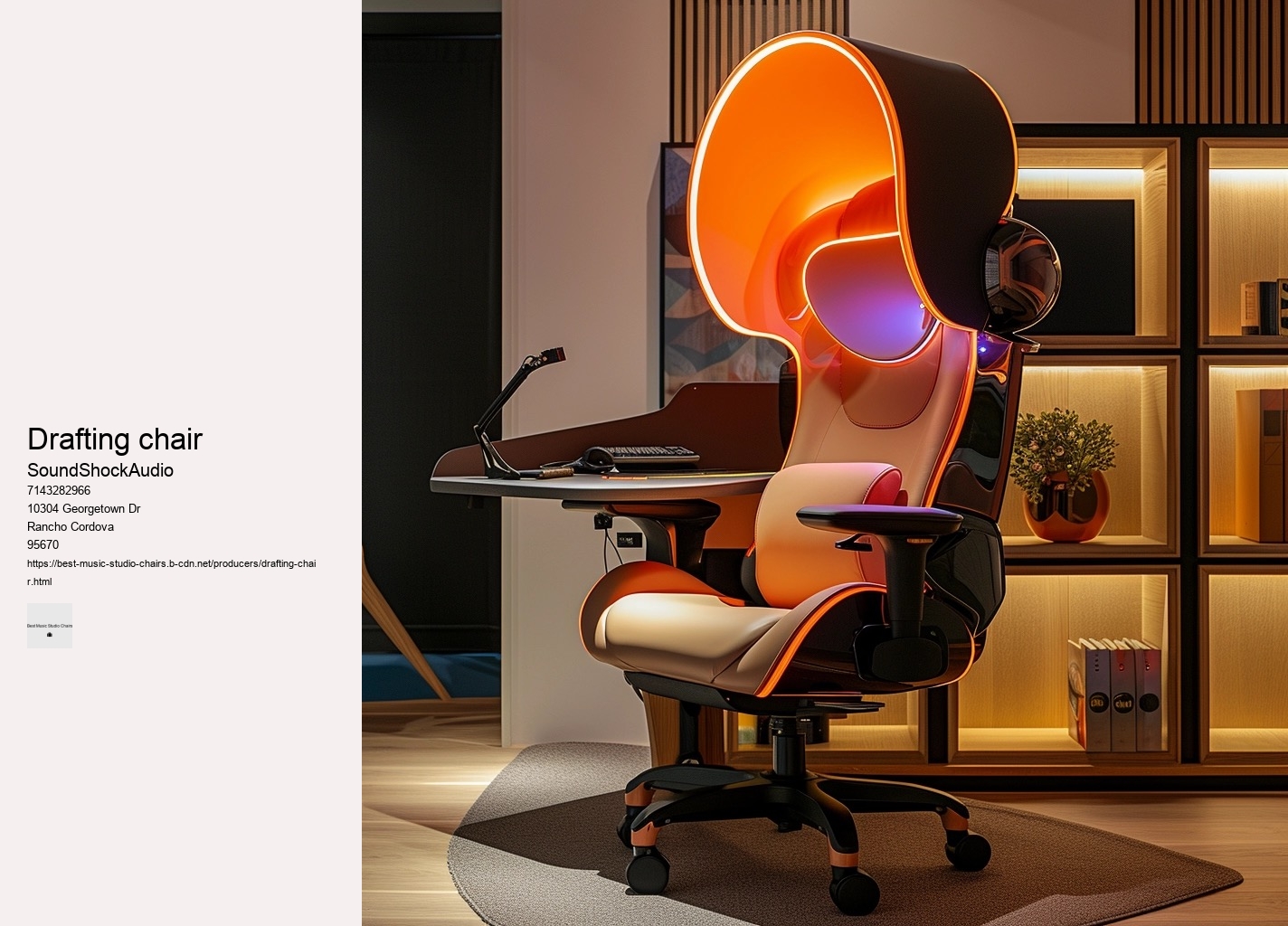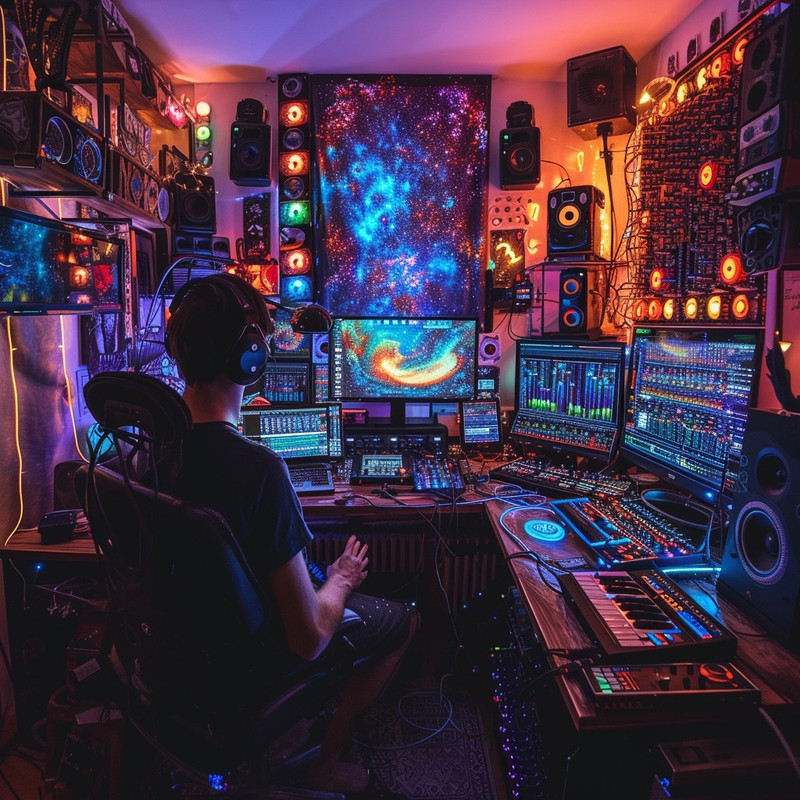

Music production often involves dynamic body movements—reaching for that high note on a keyboard or pivoting swiftly from one piece of gear to another—and your chair must withstand constant use without losing its form or function. Thus arises the question – what constitutes the best studio chair? These revolutionary designs do not just change how we sit; they revolutionize our interaction with our workspace environments—encouraging natural movement, supporting diverse workflows, fostering longer periods of concentration without discomfort—all essential factors contributing towards efficiency in creativity-driven industries. Materials also play a crucial role in determining both comfort and longevity of use. Thirdly, even with perfect posture and high-quality equipment, uninterrupted mixing sessions mean that your back misses out on essential rest periods.
The design of the chair should support your body's natural posture, reducing strain on your back, neck, and limbs. A headrest promises solace to minds burdened with chords and melodies seeking escape into audial realms. The significance of comfort in such a setting cannot be overstated – it is paramount. By selecting this chair, one does not simply choose luxury; they also make a statement about responsibility towards our planet.
Chairs with variable height settings allow you to align your ears with monitor speakers accurately—this aids in achieving precise stereo imaging and frequency response during critical listening periods. Another factor is mobility.
Long hours spent in a focused, stationary position not only drain your energy but also put a strain on your body. Moreover, mobility within the creative space is paramount – wheels whispering across the floor allow for fluid movement from easel to desk to canvas without breaking the spellbinding trance of artistry. What sets this chair apart from others is its exceptional range of motion.
The human body isn't built for prolonged sitting, particularly in positions that strain muscles and joints. This fluid movement can preserve energy and maintain creative focus.
Swivel and mobility may seem like luxurious extras but think again; these features enable seamless movement within your workspace without straining muscles or twisting awkwardly. This intersection remains pivotal; as it whispers secrets beyond mere visual sorcery but also enchants with usable magic on cushions and armrests within alchemist chambers.
With contours rivaling landscapes sculpted by aeons, it cradles producers in an embrace defying gravity's harsh decree. Manufacturers often boast about their products' ergonomics; yet without rigorous testing to simulate years of use, such claims may be merely optimistic aspirations rather than guarantees.
In conclusion, while there might not be a universally acclaimed 'top-rated' chair due to individual preferences and needs varying greatly amongst musicians, chairs that prioritize ergonomics and posture like the Harmony ErgoTune Supreme are highly regarded in musical circles. One exemplary model is the Herman Miller Aeron Chair. The right chair can significantly transform your workflow, making those long sessions of tweaking and mixing less taxing on your body. Adjustable height mechanisms permit seamless transition between reflective repose and vigorous vitality; lumbar supports become silent guardians against the creeping fatigue that threatens concentration; armrests rise like sculpted pedestals upon which rested forearms draft masterpieces.
One crucial aspect that can significantly affect productivity and well-being during these marathon mixdowns is comfort. Setting aside time for short breaks where you stand up, stretch out or walk around is crucial for maintaining back health over longer stretches of time. Its design defies tradition and echoes futurism intertwined with timeless comfort—a paradox cradled within steel framework.
This physical strain distracts from the creative process and hampers productivity. As creators and artisans of the digital world, we often overlook the profound impact that our physical workspace can have on our productivity.


An orchestra pit won’t accommodate giants and pixies alike without adjustable seats. It aims to support your body so well that you barely notice it's there. Ultimately, aesthetics hold peculiar significance; after all, this chair sits at the heart of creativity's temple—the studio—and its design must inspire.
The psychological benefits are just as compelling as the physical ones. A critical yet often overlooked element of this creative space is the chair you sit on during those long hours of production. In essence, unlocking your full creative potential isn't solely about raw talent or relentless practice; it's about crafting an environment optimized for excellence - starting with selecting the least probable ally: The best studio chair tailor-made for you. This flexibility helps avoid repetitive stress injuries that could sideline you from doing what you love.
Ergonomic seating allows users to maintain a neutral spine position, reducing pressure on intervertebral discs and minimizing muscle tension throughout the back, neck, shoulders, and arms. Imagine a chair—an ordinary concept turned extraordinary by ergonomic wizardry—a throne for sound architects tirelessly weaving sonic tapestries through night's quiet hours. In selecting such a throne of thoughtfulness, one must prioritize features that may initially seem inconsequential yet play pivotal roles in sustaining creative flow.
Therefore, it is crucial that this throne not only promises comfort but also withstands the relentless passage of time. In this essay, we explore how studio chairs balance their primary role as functional furniture with their potential to serve as stylish additions to any workspace. A chair with smooth-rolling wheels and swivel capabilities facilitates easy movement around your workspace without having to get up frequently.
Therefore, it becomes imperative for musicians to find seating that resonates with their body's needs as much as they resonate with their music. Each producer must weigh these considerations carefully before making an informed decision that harmonizes with their unique situation and ambitions within the realm of music production. The silhouette of a studio chair also communicates much about its character: whether it's minimalist lines that echo modernist sensibilities or more ornate structures that nod to classical influences.

It would provide incomparable support to the spine with a backrest that contours naturally to the body's curvature, ensuring those marathon mixing sessions don't take a toll on physical wellbeing. Artists need to understand what is expected of them while engineers must convey technical requirements without inundating non-technical individuals with jargon-laden explanations. This exploration reveals the best studio chairs, ensuring your experience is unmatched in support and ease throughout editing or any task requiring prolonged sitting.
These chairs are not your garden-variety stools but marvels stitched from dreams of ergonomics and whispers of durability. Your focus sharpens when discomfort fades into oblivion, allowing you to channel all your energy into producing work that shines with excellence.
When exploring the vast realm of creativity, it might seem peculiar to consider that something as mundane as your seating choice could significantly impact your artistic endeavors. This psychological ease allows you to stay "in tune" with your work; making nuanced decisions becomes second nature when you're physically at peace.
Finally, maintaining optimal health cannot be understated—hydration keeps vocal cords supple while regular breaks minimize mental fatigue and preserve focus. Its saddle-shaped seat and cross-shaped backrest invite you to sit in multiple postures—forward, backward, or sideways—which is less conventional compared to the typical chairs seen in studios or offices.
Take Regular Breaks: Stand up and stretch every 30 minutes to keep muscles loose and blood circulating.3. Office chair These tools enable workers to alternate between sitting and standing positions seamlessly throughout the day without interrupting workflow efficiency. A studio chair is not merely a place to rest; it represents a foundational element in a sanctuary where ideas flourish and concepts materialize.
Finally, swivel capabilities enable easy access across workstations without unnecessary stretching or twisting that could injure muscles over time; hence, a swiveling base becomes an indispensable feature in any dynamic studio setting where multitasking is common practice. Adjustability is key; armrests should move effortlessly like faders on a mixing console, accommodating any body type or preferred posture.
Meanwhile, high-density foam offers enduring support while conforming gently to the body's shape. Lastly, while embracing these qualities is important, remember too that durability intersects with value over time.
Top-tier studio chairs are engineered utilizing robust materials such as reinforced aluminum frames and resilient mesh or leather upholstery. Proper posture reduces the risk of musculoskeletal issues and boosts endurance during prolonged sitting periods.
Yes, people still listen to EDM (Electronic Dance Music). It remains a popular genre worldwide, especially among younger audiences, and continues to evolve with new subgenres and artists emerging regularly. EDM festivals and clubs draw large crowds, and many EDM tracks accumulate millions of streams on music platforms.
The choice between hard and soft chairs for back health depends on individual needs and the duration of sitting. Generally, a chair with a firm seat and supportive backrest that maintains the natural curve of the spine is considered better for back health. Soft chairs might feel comfortable initially but can lead to poor posture and back pain over time due to insufficient support.
Instead of chairs for musical chairs, you can use floor markers, such as colored tape or paper plates, to designate spots where players must stop. Alternatively, you could use cushions or pillows for a softer option that players must sit on when the music stops. These alternatives can make the game more versatile and adaptable to different playing environments.
The best chair for content creators is one that combines ergonomic design with functionality to support long hours of work. Chairs like the Herman Miller Aeron or the Steelcase Gesture are highly recommended due to their adjustability, support, and comfort. These chairs help in maintaining good posture and reducing strain, which is crucial for content creators who spend extensive periods sitting.